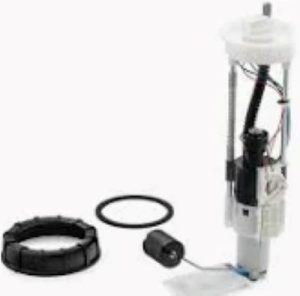Fuel pump leak inspection should first be looking at the fuel pump and e-lines around visually completely. Still, even a slow leak that's registered in millilitres could lead to a substantial decrease in fuel pressure - and the pressure figures we're talking about are 40 to 60 PSI ideal numbers for engines to perform their best. As much of a loss of pressure as 10 PSI can result in the combustion being less than perfect and engine misfires that signal a possible leak somewhere in there.
One of the first symptoms you may notice when your fuel pump leaks is a strong smell of gasoline from around the vehicle. Gasoline is a volatile compound, and even a small leak will emit fumes strong enough to smell around the fuel tank or engine bay. For example, back in 2018, a significant auto manufacturer issued a recall for more than 200,000 vehicles over poorly designed fuel pump seals which let vaporized fuel to evaporate, leading not just to inefficiency but also safety risks.
One of the more accurate ways to diagnose a leak would be performing a fuel pressure test. Pressure drops can be detected with readings at idle and under load using a fuel pressure gauge, which retails for between $30 to $50. So, if the gauge indicates 45 PSI when your car manual says you should have 60 PSI in the tank, it might mean that either there is leakage due to a failure of fuel pump or could be source of problem on lines. Since low pressure affects the amount of fuel flow, it directly effects how much power your engine can produce.
There's another approach and that's by monitoring fuel efficiency. For instance, say a car that normally gets 30 miles to the gallon is suddenly getting only 25 MPG -- one reason could be a fuel leak. The pump has to work harder just to keep you the same broke consumption and now with lower efficiency. A 5 MPG loss could have an owner shelling out as much as hundreds of extra dollars each year, particularly with more expensive fuel.

Looking at fuel lines, especially in cars with more than 100,000 miles is critical. Fuel lines develop cracks over time due to wear, temperature fluctuations, or chemical corrosion. If not fixed, a cracked line can leak as many as several ounces of fuel per hour, and that can be a dangerous situation. In one example, thousands of vehicles were recalled in 2020 when a faulty fuel line caused numerous fires that had gone undetected for some time.
Another trustworthy approach to detecting leaks is through the employment of an ultraviolet (UV) dye test. Just a dab of UV dye in the fuel system and shine a UV light on it, and even the tiniest imperfection is brought to light. Used commonly in professional diagnostics, this method can run from $20 to $40 for a DIY kit. The UV system is able to find leaks that may not be apparent during a normal inspection, such as in areas surrounding the fuel pump which can be difficult to access.
To get expert help in finding and solving fuel pump leaks, go Here Fuel Pump to read your comprehensive reference guide.
